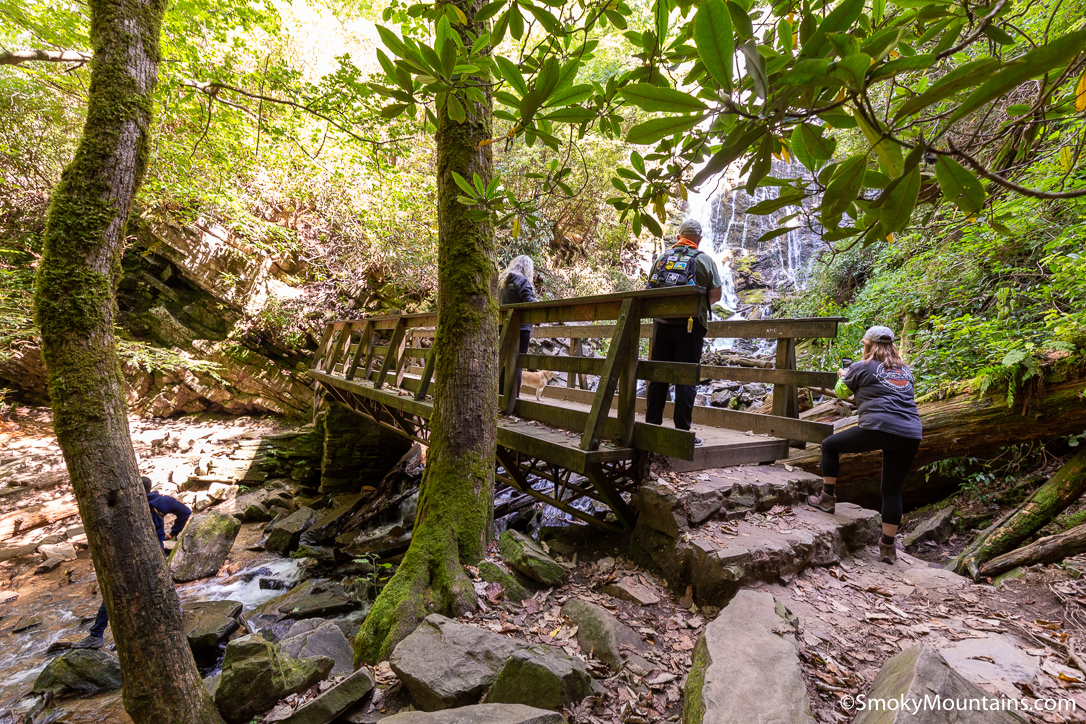
The Great Smoky Mountains famously abound with waterfalls. These whitewater drops rank among the most popular hiking destinations in Great Smoky Mountains National Park and given their spellbinding beauty and almost mystical power to transfix it’s not at all hard to see why.
In this article, we’ll round up seven of the very best waterfall hikes in the Great Smokies. Before we get into the list, though, let’s run through some quick Smoky Mountain Waterfall 101, just to provide some context.
The Wondrous Waterfalls of the Great Smokies
The reasons why there are so many gorgeous cascades and plunges in the range boil down to a few basic ingredients. For one thing, the Great Smokies are rugged: Streams follow steep courses, which makes for an overall tumbling, careening quality to water flow here.
Furthermore, the range isn’t simply steep, but also high—the most massive block of high country in the Southern Appalachians—and wet. That big mass of elevated terrain wrings a lot of rainfall out of passing weather systems, not least the super-moist airmasses sourced in the Gulf of Mexico that commonly slough over this part of the Southern Appalachians. The high Smokies may get 90 inches or more of precipitation each year—a heck of a fountainhead, supplying plenty of water that yields to gravity’s downhill tug.
Finally, the diverse, mainly sedimentary geology of the Great Smoky Mountains layers rocks of differing resistance to the forces of erosion, running water foremost among them. As less-resistant layers wear away, ledges and cliffs of more-resistant formations—particularly sandstones such as the Thunderhead Sandstone—remain, forcing down-cutting streams to spill or outright fall over them.
Now—onto the main event!
Here are our picks for the finest waterfall hikes in the Great Smoky Mountains, presented in no particular order:
Abrams Falls
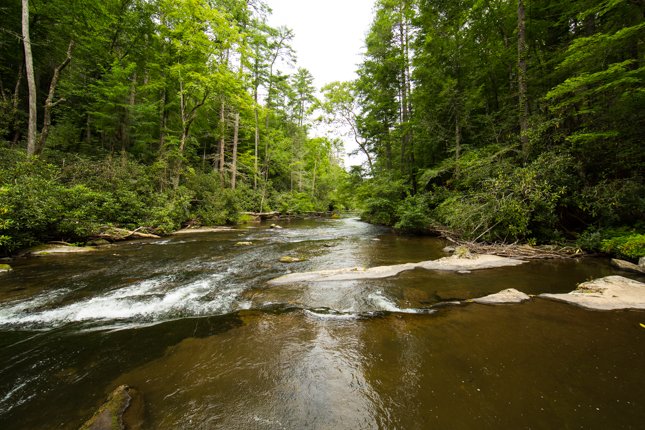
A 5.2-mile out-and-back hike of moderate difficulty takes you from Cades Cove westward to this powerful waterfall on Abrams Creek, which drains the Cove and ranks as the largest drainage flowing entirely within Great Smoky Mountains National Park. While only about 20 feet high, Abrams Falls carries some of the greatest volume of streamflow of any waterfall in the Smokies over its sandstone brink, so it’s a mighty impressive sight—as is the deep plunge pool at its foot.
The waterfall, by the way, gets its name from a Cherokee leader, Chief Oskuah, who also went by the moniker “Abram.”
Laurel Falls
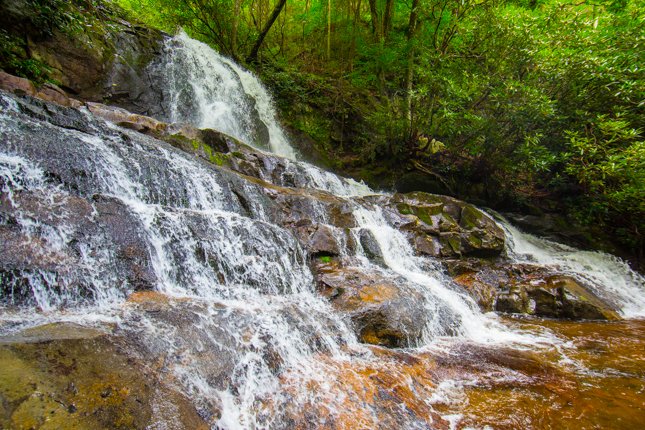
By some measures the most popular trail in Great Smoky Mountains National Park, this 2.3-mile round-trip hike introduces you to maybe the single best-known waterfall in the Smokies. At Laurel Falls, the Laurel Branch—a stream dropping south off the divide between Cove Mountain and Harrison Mountain to flow into the Little River—drops 80 feet in two picture-perfect sections.
Paved but a little rough in spots, the Laurel Falls Trail is overall an easy hike doable in an hour or two. Its memorable turnaround point is a walkway over the Laurel Branch between the upper and lower sections of Laurel Falls.
Rainbow Falls
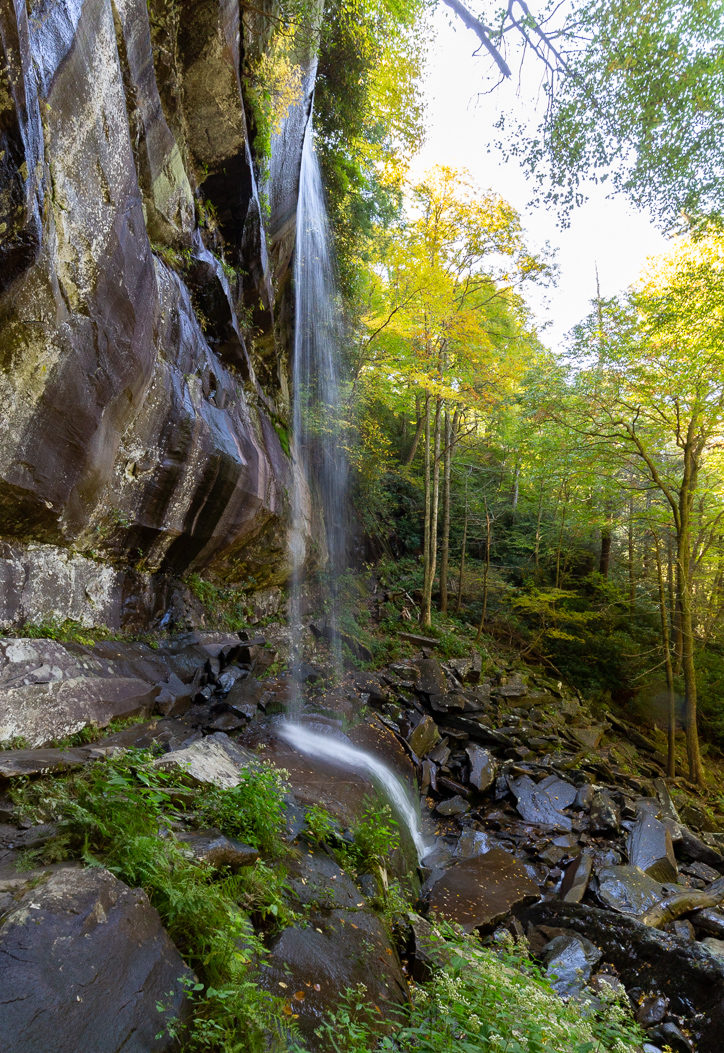
The tallest single-drop waterfall in the national park, Rainbow Falls is an 80-foot staggered plunge of LeConte Creek on the northwestern flanks of mighty Mount LeConte. The moderately challenging, 5.4-mile round-trip Rainbow Falls Trail takes you on a switchbacking climb to this spectacular flume over Thunderhead Sandstone, named for the rainbows that commonly materialize in the waterfall mist in strong sunshine.
Rainbow Falls makes a worthy enough hiking goal, but if your calves are still feeling spry and there’s enough daylight left, you might consider following the Rainbow Falls Trail further to reach the 6,593-foot summit of Mount LeConte, the third-highest peak in the Great Smokies and the sixth highest mountain in the East.
Grotto Falls
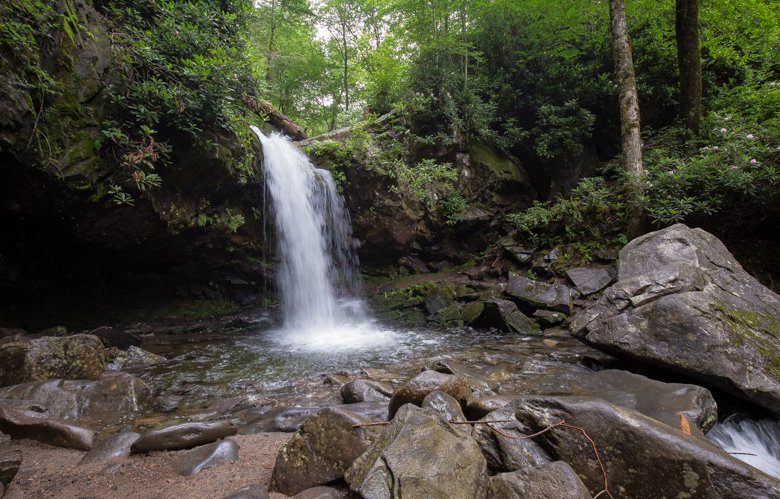
An easy 2.6-mile there-and-back hike on the Trillium Gap Trail off the Roaring Fork Motor Nature Trail near Gatlinburg accesses the magical Grotto Falls. What’s particularly special about this roughly 25-foot waterfall is the fact that you can actually walk behind its shimmery sheet of water, thanks to an ample alcove beneath the overhanging lip.
The hike itself to the falls is a gem, taking place as it does within the deep shade of a lush hemlock-hardwood forest with plenty of old-growth trees.
Ramsey Cascades
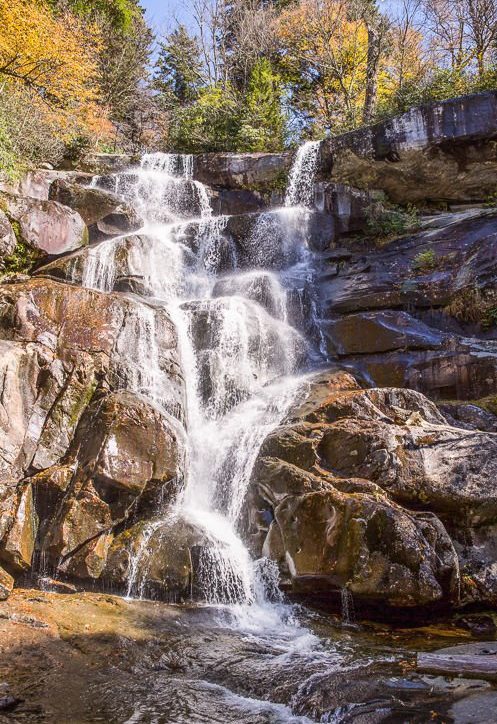
This is the toughest of the waterfalls to reach on this list but among the most spectacular: Indeed, Ramsey Cascades is the tallest waterfall in Great Smoky Mountains National Park, a 100-foot stairstep chute of wildwater and pools that’s absolutely breathtaking. You’ll work to enjoy its majesty on an eight-mile round-trip hike in the Greenbrier area encompassing more than 2,000 feet of elevation gain.
The spectacle of Ramsey Cascades is unforgettable, and it lies in a remote, stirring location set along the Ramsey (or Ramsay) Prong of the Middle Prong of the Little Pigeon River. The waterfall comes nestled in a canyon between Pinnacle Lead to the north—a ridge leading eastward to 6,217-foot Old Black—and, to the south, the Guyot Spur, which rises eastward to 6,305-foot Mount Guyot, the second-loftiest peak in the Great Smokies.
Hen Wallow Falls
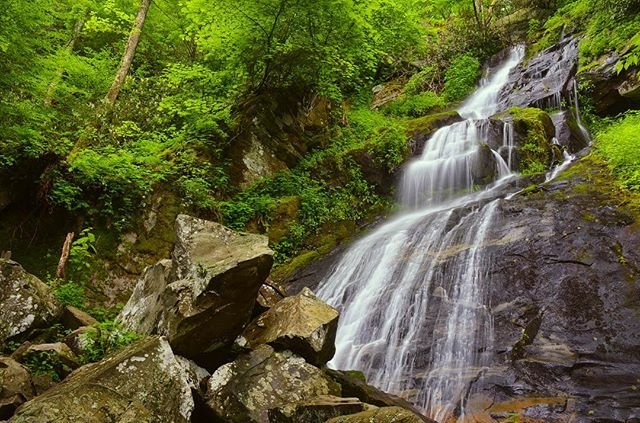
Another of the especially high waterfalls in the park, Hen Wallow Falls is a 90-foot horsetail fan on the Lower Falling Branch of Hen Wallow Creek. Just two feet or so wide at the brink, the waterfall spreads out to 20 feet or so as it surges down the rock face. You can reach via the Gabes Mountain Trail, accounting for a moderate, 4.4-mile round-trip hike.
As at many Smoky Mountain waterfalls, the rock-edged pool at the base of Hen Wallow Falls makes a good place to look for salamanders (the Southern Appalachians are the global hotspot for salamander diversity). And the ice formations that often crust up Hen Wallow Falls during winter cold spells make their own unique draw.
Mingo Falls
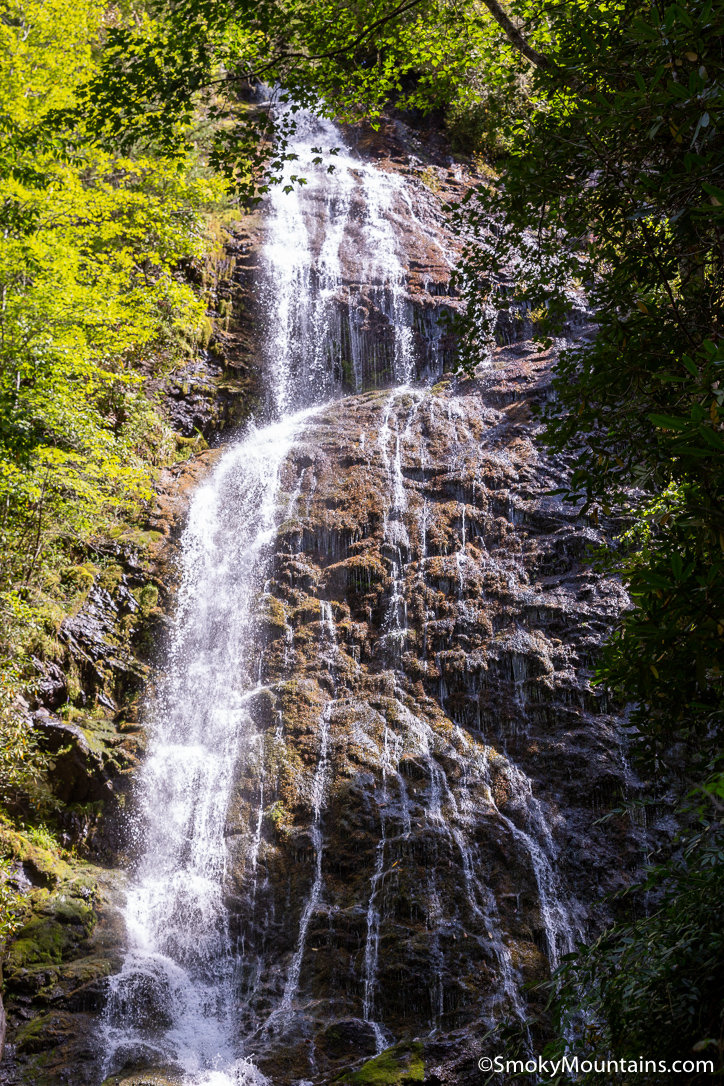
Right outside the boundary of Great Smoky Mountains National Park (very close to its Oconaluftee Visitor Center), Mingo Falls on the Cherokee Indian Reservation marks one of the grandest natural water features in the Southern Appalachians. This 120-foot horsetail ribbon on Mingo Creek—a tributary of the Raven Fork of the Oconaluftee River—is marvelous, well worth the semi-strenuous but short half-mile round-trip hike to its base.
Waterfall Hunting in the Great Smoky Mountains
The above seven are showstoppers, no question, but they’re only a mere sampling of scores and scores of beautiful waterfalls and cascades in the Great Smokies. Other exceptional spots include the 90-foot double-decker of Juney Whank Falls and the secluded beauty of Mouse Creek Falls. There’s a lifetime’s worth of whitewater appreciation to be had in the Smokies!